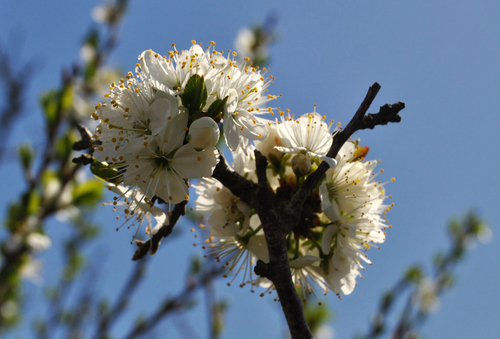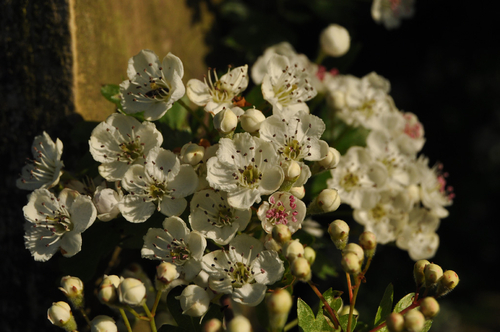The Woodland Trust run a Nature's Calendar website where they ask voluteers to record the first sightings of "indicator" species, and this is also featured on BBC Springwatch. The datasets gathered provide scientists with a better understanding of the climate over time and the differences across the country. Being the furthest south and west part of Britain, Cornwall is often the first place where these indicators appear - or to look at it another way, Spring reaches Cornwall before anyone else!
One of the indicator species is hawthorn, which is fairly easy confuse with blackthorn as both have thorns and white flowers which appear in Spring. There are a few things to look for to tell them apart.
As a general rule, blackthorn starts flowering on bare stems whereas hawthorn has leaves before it flowers but as you can see here the blackthorn can put on some leaf pretty fast in the sunshine to make that distinction trickier.

The colour of the pollen is quite a good way to tell them apart. In hawthorn the pollen starts off pink and the older stamens appear black:

In blackthorn the pollen is orange. Another thing to look for is the petal shape: hawthorn petals are cup-shaped, a bit broader and tend to overlap with each other whereas blackthorn is a bit more "gappy" and flat.

Finally if the leaves are large enough to see clearly then blackthorn has leaves in a classic leaf shape with slightly serrated edges whereas hawthorn leaves split into several lobes.
 Blackthorn |
 Hawthorn |
Distinguishing the blossom has another practical use: You can make a cordial from blackthorn blossom by dissolving sugar in water and then adding the petals to the warm liquid and allowing to cool. This can be used to make a sorbet or added to chilled, dry sparkling white wine to make a delightful drink that is full of the joys of Spring. Hawthorn blossom, however, contains trimethylamine - one of the chemicals present in decaying flesh!